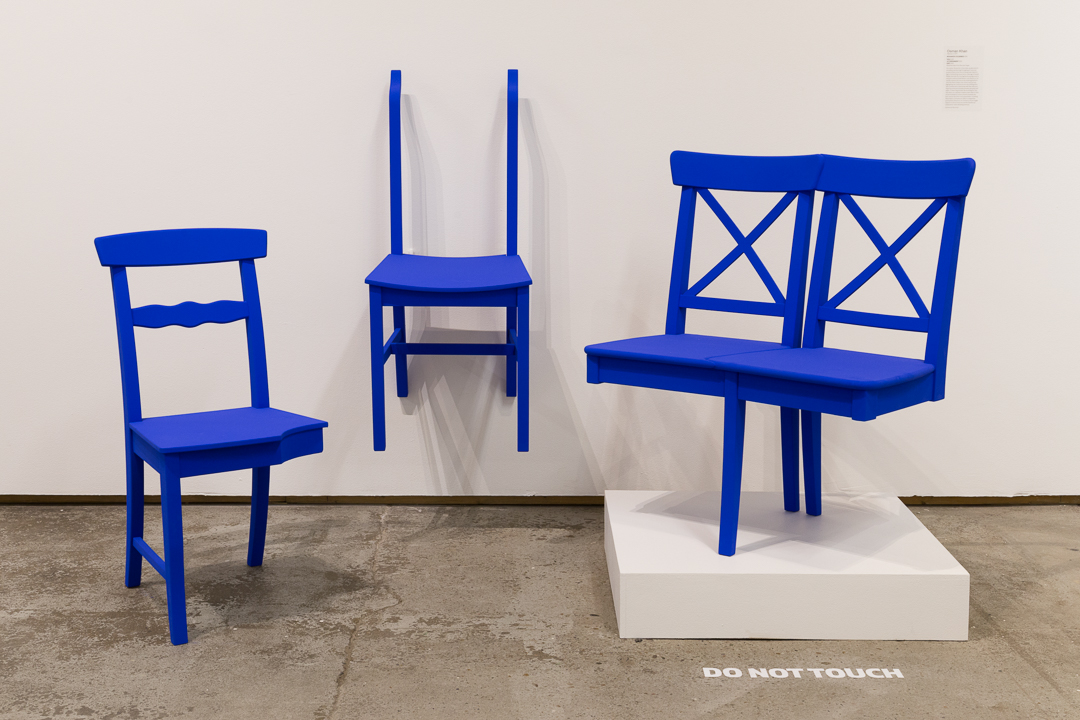USELESS UTILITY

Useless Utility is an exhibition that explores the liminal space one encounters when engaging with sites of labor and domesticity. As a result of deindustrialization, professional and domestic life has become increasingly blurred. Useless Utility is curated by Jova Lynne, Ford Foundation Curatorial Fellow at MOCAD and organized by the Museum of Contemporary Art Detroit.
PAST EXHIBITIONS
USELESS UTILITY
FEBRUARY 1 – APRIL 21, 2019
Useless Utility is an exhibition that explores the liminal space one encounters when engaging with sites of labor and domesticity. As a result of deindustrialization, professional and domestic life has become increasingly blurred. The function and materials found on both sites meld together–from the home office to open floor factories, co-working environments and the live-work studio–these spaces no longer serve a singular purpose. This exhibition examines how post-industrialization has shaped the studio practices of regional artists. As innovators on the frontier of material-use and modalities for production–their work encourages us to speculate on the future of industry, domesticity, as well as personal space to create an archive of this time from which generations to come can learn and build from.
A six-person group exhibition, Useless Utility features over 20 objects that highlight the work of Southeast Michigan-based artists who live, create, are from or have a close relationship to the city of Detroit. Focusing on the material legacy of the local area–artists featured in this exhibition have practices that subvert the functionality of objects or images as a means to speak to themes around the space between labor and sites of intimacy–such as work and home. Useless Utility explores how the lack or manipulation of function in everyday objects impacts interpretation of the self, regional culture, and societal standards through the lens of contemporary art.
Each of the artists featured in Useless Utility are influenced by the material, politics, and culture that inhabits the northern edge of the American rust belt. Their works speak to the complex ways in which self-reflection can occur through a subversion of objects or materials.
Useless Utility is curated by Jova Lynne, Ford Foundation Curatorial Fellow at MOCAD and organized by the Museum of Contemporary Art Detroit. Exhibition Management is provided by Zeb Smith, Exhibitions Manager and Tim Johnson Exhibitions Assistant. Exhibition support is provided by Elysia Borowy-Reeder, Executive Director of MOCAD and Larry Ossei-Mensah, Susanne Feld Hilberry Senior Curator.
Exhibitions and public programs at MOCAD are supported by the A. Alfred Taubman Foundation. Additional funding is provided by Étant donnés Contemporary Art, a program of the French American Cultural Exchange (FACE) Foundation. Étant donnés is developed in partnership with the Cultural Services of the French Embassy in the United States, with lead funding from the Florence Gould Foundation, the Helen Frankenthaler Foundation, Chanel USA, the ADAGP, the French Ministry of Culture, and Institut Français.

